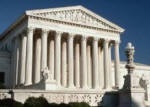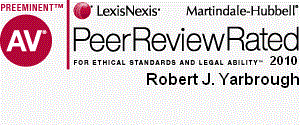Newsletter Issue 71 - January 2015
In this issue:
3D printers
Trademark juries
Patent 'public use'
Ask Dr. Copyright ...
Dear Doc:
I heard that computers can now print in "3D", and make things out of
plastic, metal and ceramic, and that there are websites that offer
designs for guns and gun parts that can be downloaded for free, and
then printed on these new printers. I even saw an episode of NCIS
where the terrorists used plastic 3D printed guns that could not be
detected by metal detectors. Shouldn't the government clamp down on
these things?
Signed,
John Q. Luddite
Dear Lud:
Yes! It's completely true! It's alarming! It's terrifying! It is
possible to buy a 3D printer, such as a "MakerBot" or even a
commercial one, download the designs for a gun, print it out, and
use it. Law enforcement agencies are concerned. As with any new
technology, however, the scary and dangerous uses are getting most
of the press, while the kind and valuable uses are not covered as
much.
Michael Balzer, has a 3D design business that used these new
printers. His wife developed a tumor just behind her eye that could
have taken her sight. She had an MRI, and Balzer used his 3D skills
to convert that image into a 3D model that helped her surgeons plan
a new approach to what would otherwise have been a difficult and
dangerous operation. His wife is now fine, and her sight was saved.
Doctors project that this use of 3D printing will become more common
in the near future, as we print models of bones, organs, and other
body parts to plan treatment.
Doctors are also using 3D printing to print prosthetic body parts. A
doctor at Johns Hopkins University recently gave a new hand to a
fourth grade teacher after the students in her school wrote to him
to ask that he help. The entire school went to Baltimore to visit
the Hopkins Medical School, and to see their teacher get her new
hand.
Other uses may be equally creative.
Jay Leno,
the former host of the
"Tonight" Show, collects old cars. Sometimes, it's impossible to get
parts for them. So Jay 3D prints them, right in his own garage.
What does this have to do with copyright? Well, Lud, those 3D
designs are protectable by copyright, but are also considered
"speech" and are protected by the First Amendment to the
Constitution. That's why the government can't just "clamp down" on
the web sites offering gun parts. In our legal system, in order to
have important rights, we sometimes have to take the good with the
bad. We can't just limit what people publish on the Internet to the
stuff we like. It's just a part of our democratic system.
Have questions about copyright and cutting edge technologies? Give
the attorneys at LW&H a call, Skype, email, tweet, or any other kind
of shout. They do this stuff.
Until next month,
The "Doc"
The Jury System is Alive and Well: The United States Supreme
Court Weighs In On a Question of Trademark Law. 
It's not very often that the United States Supreme Court decides
a trademark issue but this month
the Supremes delivered an opinion
on a question of trademark law called "tacking." So what is
"tacking?" If you know, you probably should be reading a more
advanced newsletter, but if you don't, tacking is a doctrine for
establishing trademark priority in some infringement cases. Here's
how it works.
Typically, the owner of a trademark has priority over other users of
the same or similar trademark if it began using the trademark in
commerce first. We call that trademark owner the "senior" or
"priority" user. Now, should the senior user decide it wishes to
revise its trademark, the owner may lose its priority date. That may
be okay unless the trademark owner is involved in infringement
litigation. Then it would be desirable to have its priority based
upon the original trademark, not the revised one. Courts may apply
the original priority date if the trademark owner did not change the
so-called "commercial impression" of the original trademark. This
is called "tacking" and the test of whether to apply tacking is
whether
"The original and revised marks are "legal equivalents" in that they
create the same, continuing commercial impression....from the
perspective of an ordinary purchaser or consumer."
Apparently, there was a split among federal circuit courts over
whether the judge or jury should determine whether tacking is
applicable in an infringement case. The United States Supreme Court
granted certiorari for the purpose of resolving this question. In an
opinion delivered by Justice Sotomayor, the Court held that a jury
should make the determination although it did not rule out
circumstances, such as bench trials, where a judge could. Here's
what the Court wrote:
"Application of a test that relies upon an ordinary consumer's
understanding of the impression that a mark conveys falls
comfortably within the ken of a jury. Indeed, we have long
recognized across a variety of doctrinal contexts that, when the
relevant question is how an ordinary person or community would make
an assessment, the jury is generally the decision maker that ought
to provide the fact-intensive answer."
So you see the jury system is alive and well even when it comes to
application of trademark principles.
What is "Public Use?"
We'll start with the conclusion: don't use your invention in
public u ntil
AFTER you file a patent application.
ntil
AFTER you file a patent application.
Back to the beginning: Under the patent statute, a 'public use' of
an invention prior to filing a patent application will destroy U.S.
patent rights to the invention. Before March 16, 2013, the inventor
had one year after the public use to file the application. On March
16, 2013 the law changed and any public use without a pending patent
application IMMEDIATELY terminates patent rights.
But what is a 'public use?' Is a use that does NOT disclose the
invention a 'public use?' How about use by a trusted confidant?
What if the use if not by the inventor, but by a third person? What
if an invention is stolen and the thief or a person who receives the
invention from the thief uses the invention in public?
The Federal Circuit Court recently considered these questions in
Delano Farms v California Table Grape Commission. Delano Farms
challenged plant patents (yes, you can patent a plant) for two grape
varieties owned by the U.S. Department of Agriculture. Before the
U.S.D.A. applied for patents, an employee acting without
authorization provided grape cuttings to two grape growers. The
employee knew that his action was unauthorized and admonished the
grape growers to keep the plants secret. The grape growers grew and
propagated the grapes in secret. They informed one other person and
provided plant material to that person, a confidant of the grape
growers, who also grew the grape plants in secret. The grapes were
grown in publicly visible fields, but were not labeled and were
indistinguishable from the other grape plants in the fields.
The Federal Circuit determined that under these facts, the use of
the grape plants by the grape growers was not a 'public use' and did
not invalidate the plant patents. The factors that the court
considered important were that the invention was not commercially
exploited (at least not during the period that would trigger the
bar), that the use did not create an impression in members of the
public that the invention was available, and, most importantly, that
the parties involved, including the U.S.D.A, the discloser and the
grape growers, all treated the grape plants as secret and took steps
to keep the grape plants secret. The court applied pre-March 16,
2013 law, but we believe that the results would be the same for
post-March 16, 2013 law.
The most interesting question is one that the court did not decide -
whether public use of an invention by a thief who steals the
invention or receives the invention as stolen property triggers the
'public use' bar and terminates patent rights. The court did not
reach this question because there was no 'public use.'
Want to avoid ever having to fight this issue out in court? File
your patent application before you use the product where anyone can
see you who does not owe you a duty of secrecy.

